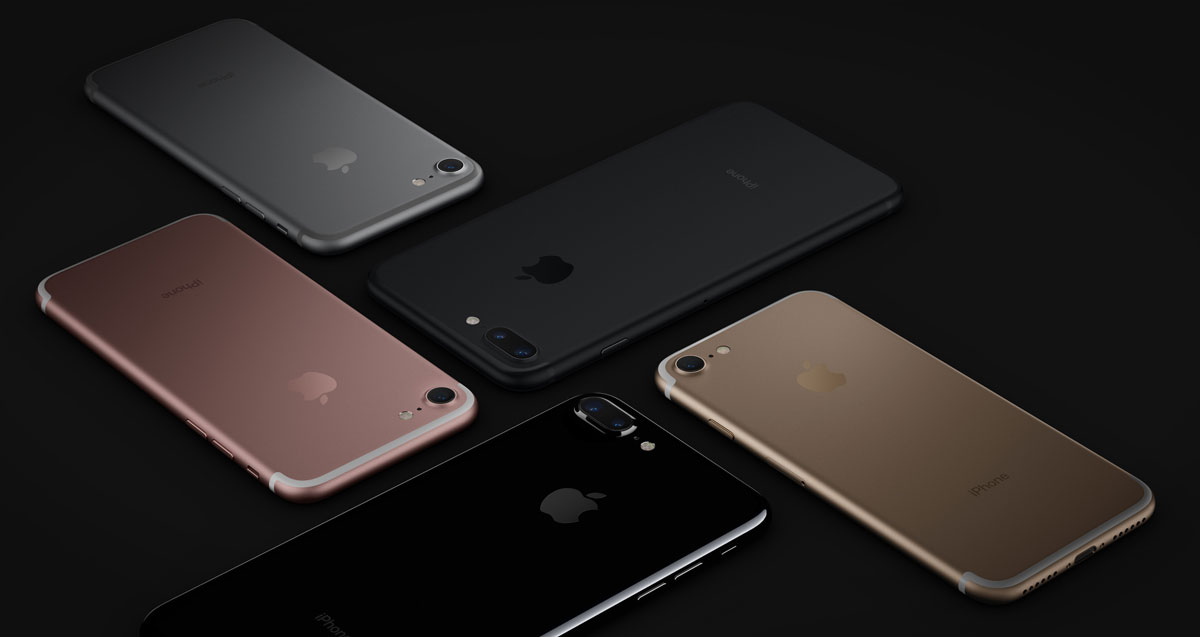Apple has launched its new iPhone 7 and 7 Plus in San Francisco early this morning (NZ time). The biggest change for iphone fans is a new camera system, better sound and the phone’s water resistance, a feature Samsung and Sony have been doing for years.
The new iPhone features a design that’s very similar to last year’s iPhone 6S (and the year prior’s iPhone 6), with a rounded aluminum body. Also new is the long-rumoured dual camera system, stereo speakers, and a darker black colour scheme. And, as expected, the iPhone 7 does not have a headphone jack, rendering countless 3.5mm headphones useless with the device (or requiring the use of an adapter).
The new phone may look very similar to last year’s models, but instead of the matt metal finish we’ve become used to it, it has a glossy, mirrored design. The new colour is called Jet Black and is much darker and richer than the Space Black of years past. Apple is also releasing a standard black model, along with gold, silver, and rose gold.
The new iphones are water resistant. They can be immersed in water and still be expected to work.
Apple has redesigned the iconic home button for the iPhone 7, making it force sensitive, like the Force Touch trackpads used in recent MacBook laptops. The phone has also gained the Taptic Engine haptic feedback system from the Apple Watch, which provides different vibration feedback for various alerts.
The camera in standard sized iPhone 7 has been upgraded with optical image stabilization and a brighter f/1.8 lens that lets in 50 per cent more light than the iPhone 6S’ f/2.2 lens. Apple says the new 12-megapixel sensor, which has the same resolution as last year’s phone, is 60 per cent faster and 30 per cent more efficient. It’s coupled with a new image processing chip and quad-LED flash that produces 50 per cent more light. Apple’s Phil Schiller boasts that the new processing engine leverages machine learning and has “supercomputer performance.” The front camera on the iPhone 7 has been bumped to 7 megapixels with automatic image stabilization for better selfies and video recording.
But the real upgrades were saved for the larger iPhone 7 Plus’ dual camera system. The company says the new dual camera allows for true 2x optical zoom without loss of image quality. One of the lenses is equivalent to 28mm for wide angle shots (like a standard iPhone camera), while the other has a closer, 60mm equivalent lens. Switching between the two cameras is seamless in the iPhone 7 Plus’ camera app – just tap the 1x or 2x button and the camera will switch automatically. You can zoom further, up to 10x, but beyond 2x is digital zoom that crops the photo. Apple has also developed a feature that uses both lenses to mimic a shallow depth of field, like what can be accomplished with a larger DSLR. This feature will be available via a software update later this year.
The new phones have upgraded displays that are 25 percent brighter, with a wider color gamut for better color reproduction and improved color management. Both include the 3D Touch pressure sensitive display that debuted with the 6S line. But it appears that Apple did not update the image resolution of the displays, meaning that this year’s iPhone has the same number of pixels as 2014’s iPhone 6.
Share this Post



